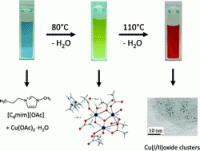This month sees the following articles in Dalton Transactions that are in the top ten most accessed:-
Self-assembly in inorganic chemistry
Paul E. Kruger and Thorfinnur Gunnlaugsson
Dalton Trans., 2011, 40, 12003-12004 DOI: 10.1039/C1DT90162A
The future of metal–organic frameworks
Neil R. Champness
Dalton Trans., 2011, 40, 10311-10315 DOI: 10.1039/C1DT11184A
Metal ion directed self-assembly of sensors for ions, molecules and biomolecules
Jim A. Thomas
Dalton Trans., 2011, 40, 12005-12016 DOI: 10.1039/C1DT10876J
Six new metal–organic frameworks with multi-carboxylic acids and imidazole-based spacers: syntheses, structures and properties
Feng Wang, Xiaohuan Ke, Jinbo Zhao, Kejian Deng, Xiaoke Leng, Zhengfang Tian, Lili Wen and Dongfeng Li
Dalton Trans., 2011, 40, 11856-11865 DOI: 10.1039/C1DT11130B
A chelation enhanced selective fluorescence sensing of Hg2+ by a simple quinoline substituted tripodal amide receptor
B. Nisar Ahamed and Pradyut Ghosh
Dalton Trans., 2011, 40, 12540-12547 DOI: 10.1039/C1DT10923E
Computational chemistry of molecular inorganic systems
Stuart A. Macgregor
Dalton Trans., 2011, 40, 11065-11065 DOI: 10.1039/C1DT90143E
Structural and metallo selectivity in the assembly of [2 × 2] grid-type metallosupramolecular species: Mechanisms and kinetic control
Artur R. Stefankiewicz, Jack Harrowfield, Augustin Madalan, Kari Rissanen, Alexandre N. Sobolev and Jean-Marie Lehn
Dalton Trans., 2011, 40, 12320-12332 DOI: 10.1039/C1DT11226K
Solvothermal synthesis, crystal structure, and properties of lanthanide-organic frameworks based on thiophene-2,5-dicarboxylic acid
Ya-guang Sun, Bing Jiang, Tian-fang Cui, Gang Xiong, Philippe F. Smet, Fu Ding, En-jun Gao, Tian-yi Lv, Koen Van den Eeckhout, Dirk Poelman and Francis Verpoort
Dalton Trans., 2011, 40, 11581-11590 DOI: 10.1039/C1DT10156K
A comparison between artificial and natural water oxidation
Xichen Li, Guangju Chen, Sandra Schinzel and Per E. M. Siegbahn
Dalton Trans., 2011, 40, 11296-11307 DOI: 10.1039/C1DT11323B
Synthesis, characterization, plasmid cleavage and cytotoxicity of cancer cells by a copper(ii) complex of anthracenyl-terpyridine
Amit Kumar, Jugun Prakash Chinta, Amrendra Kumar Ajay, Manoj Kumar Bhat and Chebrolu P. Rao
Dalton Trans., 2011, 40, 10865-10872 DOI: 10.1039/C1DT10201J
Why not take a look at the articles today and blog your thoughts and comments below.
Fancy submitting an article to Dalton Transactions? Then why not submit to us today or alternatively email us your suggestions.
Comments Off on Top ten most accessed articles in October
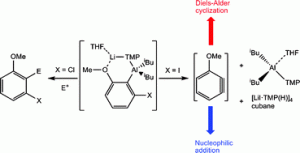 Alkali-Metal Mediated Metallation (AMMM) is a recent advance in C–H to C–metal exchange and it could be very useful synthetic chemistry community. AMMM involves the mixing of a typically powerful metallating reagent (e.g. an alkali-metal compound) with a weaker metallating reagent to make a single ligand-shared molecular compound which seemingly displays the reactivity of the alkali-metal coupled with the selectivity and functional group tolerance of the subordinate metal. Hey Presto – a great metallation!
Alkali-Metal Mediated Metallation (AMMM) is a recent advance in C–H to C–metal exchange and it could be very useful synthetic chemistry community. AMMM involves the mixing of a typically powerful metallating reagent (e.g. an alkali-metal compound) with a weaker metallating reagent to make a single ligand-shared molecular compound which seemingly displays the reactivity of the alkali-metal coupled with the selectivity and functional group tolerance of the subordinate metal. Hey Presto – a great metallation!










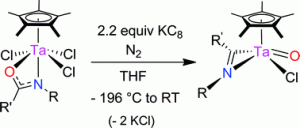
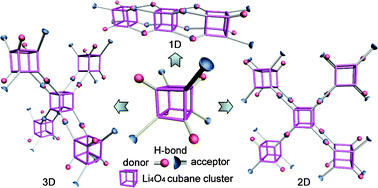
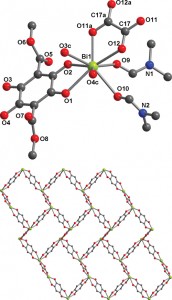

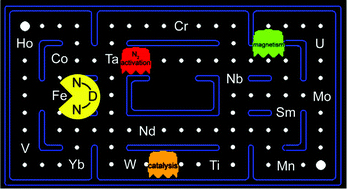

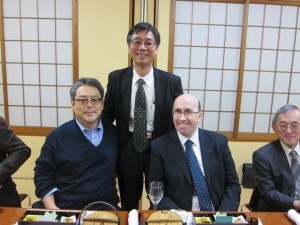
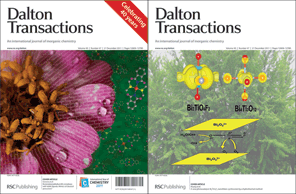 Discover the beautiful outside cover of
Discover the beautiful outside cover of 
